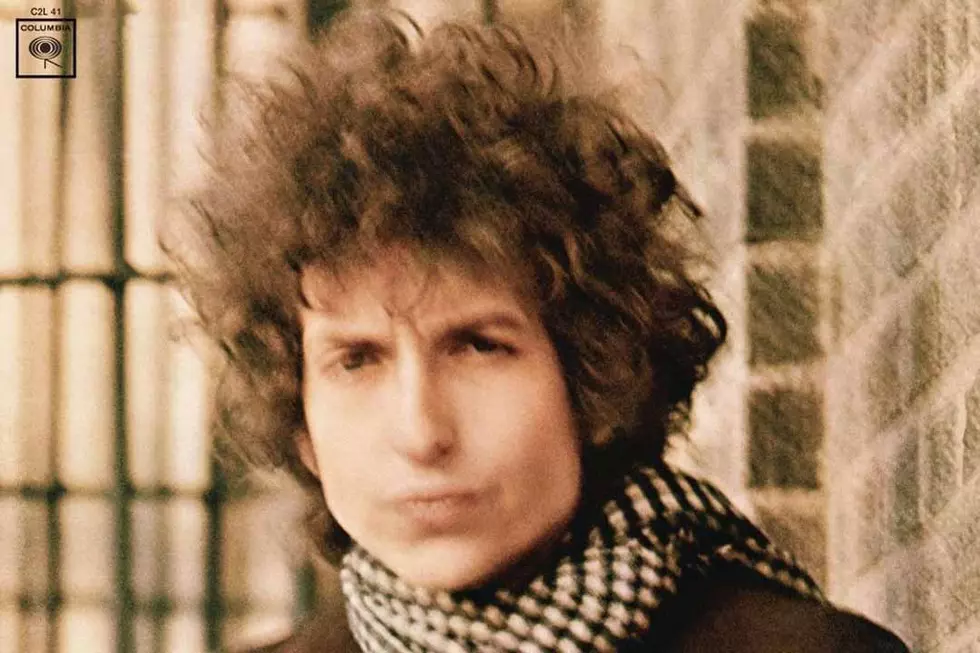
How Bob Dylan Wrapped Up One of Rock’s Greatest Runs With ‘Blonde on Blonde’
Few artists completed a run as flawless as the one Bob Dylan wrapped up in mid-July 1966, when he released Blonde on Blonde – his third classic album in less than a year and a half. The Beatles did it. So did the Rolling Stones, to an extent. But there aren't too many others in the history of popular music who were on the creative roll that Dylan was on in 1965-66.
Starting in March 1965, when he plugged in and took his music in bold and controversial new directions on Bringing It All Back Home, and continuing through Highway 61 Revisited – which was released in August 1965 – Dylan steered rock 'n' roll into uncharted territories. When he entered a New York studio a little more than a month after the release of Highway 61 Revisited to start work on his seventh album, he was brimming with ideas.
With Bob Johnston once again producing (he was behind the boards for all but "Like a Rolling Stone" on Highway 61 Revisited), and the Hawks (who later renamed themselves the Band) backing, they tore through a handful of songs, off and on, over the next few months – going deep into January 1966. But Dylan wasn't happy with the results, scrapping all but one of the songs recorded during the sessions – "One of Us Must Know (Sooner or Later)" – when it came time to set Blonde on Blonde's track list. (A single, "Can You Please Crawl Out Your Window?," released in December, also came from these sessions.)
He then went to Nashville, taking keyboardist Al Kooper and the Hawks' guitar player, Robbie Robertson, with him. Johnston lined up some studio musicians, and in mid-February, work resumed on Blonde on Blonde. This time, everything jelled. Dylan wrote and revised lyrics in the studio, and the band immediately began recording them, giving many of the album's songs – like "Visions of Johanna," "Stuck Inside of Mobile With the Memphis Blues Again" and "Just Like a Woman" – the spontaneity, but a sort of focused spontaneity, Dylan was looking for.
By mid-March, recording was complete, and 14 songs from the sessions were chosen for the double album, one of pop music's first. (A handful of outtakes surfaced over the years on the Biograph, Bootleg Series Volumes 1-3 and The Cutting Edge collections; all are worth hearing.) In a way, Blonde on Blonde is a stronger, better structured and more accomplished record than its celebrated predecessors. And it could be argued that it's Dylan's best work. It certainly sounds like it could be through most of its playing time.
Listen to Bob Dylan Perform 'Leopard-Skin Pill-Box Hat'
The album's best songs – "Visions of Johanna," "I Want You," "Stuck Inside of Mobile With the Memphis Blues Again," "Leopard-Skin Pill-Box Hat," "Just Like a Woman" – carry Bringing It All Back Home and Highway 61 Revisited's mix of the personal and surreal into a sort of mid-'60s idealism where lyrics like "He just smoked my eyelids and punched my cigarette" sit snugly alongside melodies as pretty as the ones in "I Want You" and "Just Like a Woman." Even the opening track, "Rainy Day Women #12 & 35," a studio goof at best, offers a peek into the sessions' loose camaraderie.
Blonde on Blonde was the culmination of a period that found Dylan, in a sign of things to come throughout his career, restlessly exploring shades of the same themes, and sometimes disassembling and then rebuilding them into strange new beings. The thread between his Woody Guthrie-inspired 1962 self-titled debut and the fertile 1965-66 months that yielded his three best albums may seem tenuous at times, but those later LPs' freewheeling spirit – best exhibited on Blonde on Blonde – was there from the start. The electric rock 'n' roll surging through them amplifies it to the point of something new.
His role as a bandleader grew here, too. After working with some old cohorts, the Hawks and finally Nashville musicians, Dylan took the Hawks – whom he first played with a mere month before heading into the studio with them for Blonde on Blonde's first sessions – on a whirlwind U.K. tour that ranks among the greatest in all of rock history. Blonde on Blonde remains the most confident record of the decade that shaped him. Everything was leading to this, and there's barely a wasted second in the album's 73 minutes.
The album made it to No. 9 on the chart, with three singles – "Rainy Day Women #12 & 35," "I Want You" and "Just Like a Woman" – reaching the Top 40. (The first of these climbed to No. 2, which, along with "Like a Rolling Stone" from the previous year, is the highest-charting of Dylan's long career.)
The era came to an end almost as abruptly as it had started. Following the 16 months that produced three of the greatest albums ever made, Dylan went on an extended break. He recorded The Basement Tapes with the soon-to-be-renamed Band, but that wasn't officially issued until 1975. He may or may not have been in a motorcycle accident at the time.
Dylan didn't end up releasing another record until John Wesley Harding in late December 1967. By then, he had changed directions once again, heading into rootsy Americana music inspired by a past even more distant than Guthrie's. After Blonde on Blonde, there really was nowhere else to go.
Top 10 Double Albums
Odd Couples: Bob Dylan and Michael Bolton
More From Ultimate Classic Rock









